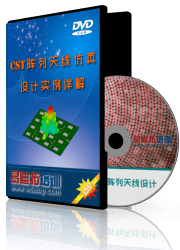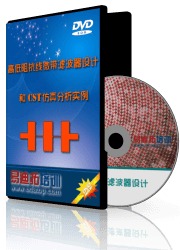- 易迪拓培训,专注于微波、射频、天线设计工程师的培养
CST2013: AR-Filter
 Post Processing: Signal Post Processing
Post Processing: Signal Post Processing  Time Signals
Time Signals  AR Filter for Port Signals...
AR Filter for Port Signals...
 Post Processing: Signal Post Processing
Post Processing: Signal Post Processing  Time Signals
Time Signals  AR Filter for Probe Signals...
AR Filter for Probe Signals...
 Post Processing: Signal Post Processing
Post Processing: Signal Post Processing  Time Signals
Time Signals  AR Filter for Monitors...
AR Filter for Monitors...
Auto regressive filters are capable of calculating spectra for time signals that have not yet reached steady state. You can save a huge amount of calculation time, especially for highly resonant structures, by applying these filters to a set of time signals. These time signals can be the output signals at a port, the signals recorded by a probe or current and voltage monitors.
See the AR-Filter Overview page to learn about the basic concepts of auto regressive filters.
The AR-filter dialog box helps you to find an appropriate filter and gives you the opportunity to supervise and abort the whole filter and spectra or S-parameter determination process. After a calculation run, you will obtain a printed summary and a new set of spectra or S-parameters respectively based on the found AR-filter.
Please note, that for S-Parameter calculations in the time domain it is possible to reduce simulation time significantly by applying the AR-filter online.
First time step
Enter the first time step from which filter determination starts.
Skip time steps
Enter the number of time steps that will be skipped after a filter has been found and before the next filter will be determined.
Max. frequency
Because the time signals will be low pass filtered within the AR calculation process, you need to specify the maximum frequency of the low pass filter here (usually : 1,2 * fmax (from the Frequency dialog box)).
Max. order of filter
Enter the number of recursive filter elements here. Higher order filters usually deliver more accurate results, but the calculation time increases quadratically with the number of filter elements (max. 100 elements).
Relative window length
This entry describes the length of the analyzed time interval relative to the maximum number of elements.
e.g. Max. order of filter : 40
Relative window length : 2
Number of analyzed time samples 40 * 2 = 80
Progress and status
This dialog group gives you information about the status and the energy error of the currently calculated filter.
Because such a calculation can last some time you might want to abort it pressing the Accept button when the displayed energy error is acceptable (small enough).
Accept
Press this button to abort the current calculation run and use the best calculated filter until this point.
Defaults
Resets all values to the default values.
Start
Starts the filter determination. After the calculations have been finished, the information about the filter found will be printed within the AR-filter results dialog box. The calculated results are listed in the navigation tree with the ending (AR).
Abort
Aborts a complete calculation run without leaving the dialog box.
Help
Shows this help text.
OK
Stores your settings and closes the dialog box.
Cancel
Closes this dialog box without performing any further action.
See also
AR-Filter Overview, AR-filter results, Special Solver Parameters - AR-Filter, Signals in Time Domain Simulations Overview
CST微波工作室培训课程套装,专家讲解,视频教学,帮助您快速学习掌握CST设计应用
上一篇:CST2013: Farfield Plot – Phase Center
下一篇:CST2013: Farfield Plot – Plot Mode
CST中文视频培训教程 | More...
 最全面、最专业的CST微波工作室视频培训课程,可以帮助您从零开始,全面系统学习CST的设计应用【More..】
最全面、最专业的CST微波工作室视频培训课程,可以帮助您从零开始,全面系统学习CST的设计应用【More..】
频道总排行
- CST2013: Mesh Problem Handling
- CST2013: Field Source Overview
- CST2013: Discrete Port Overview
- CST2013: Sources and Boundary C
- CST2013: Multipin Port Overview
- CST2013: Farfield Overview
- CST2013: Waveguide Port
- CST2013: Frequency Domain Solver
- CST2013: Import ODB++ Files
- CST2013: Settings for Floquet B










